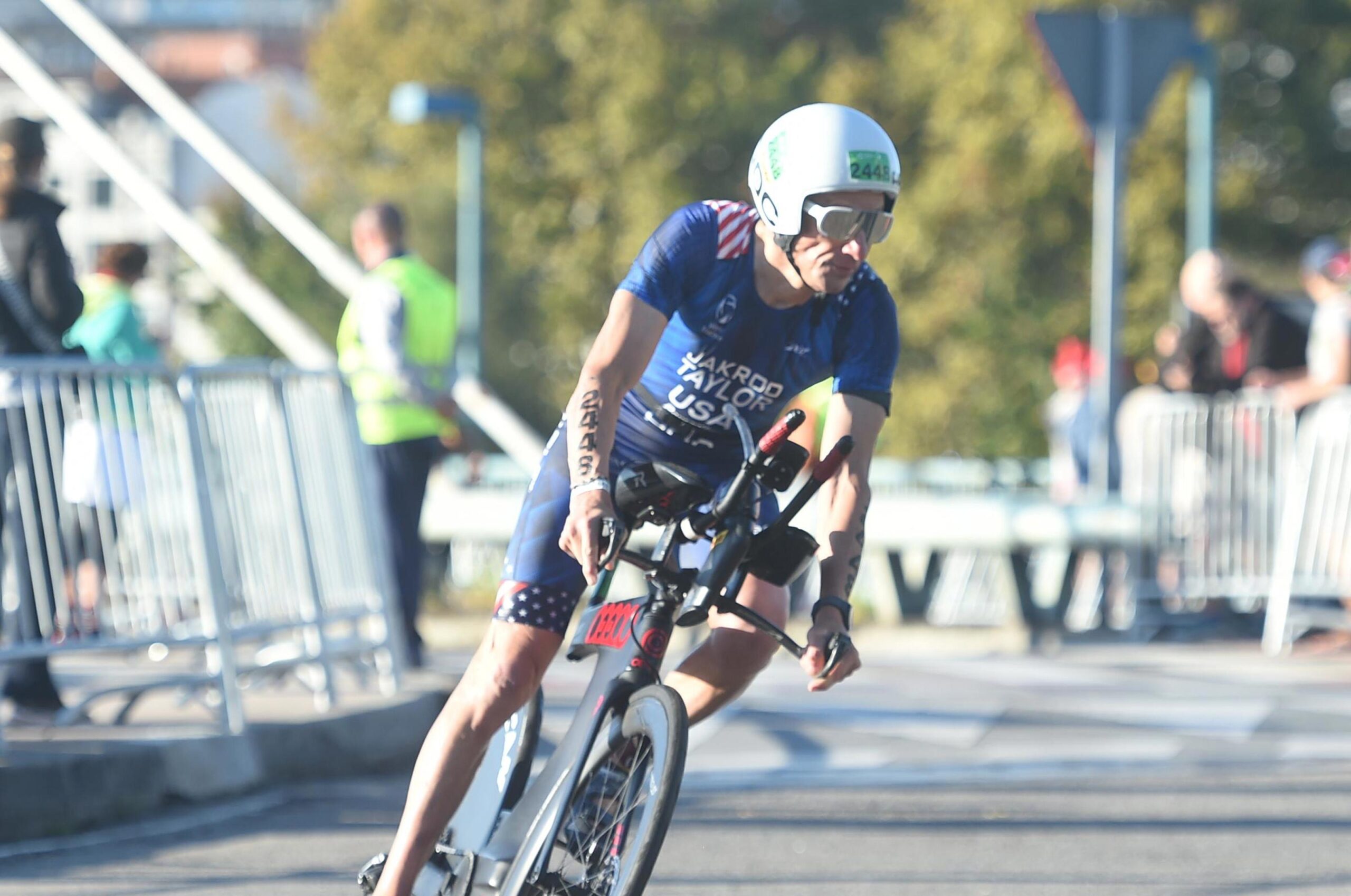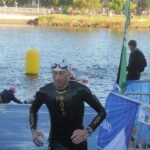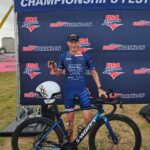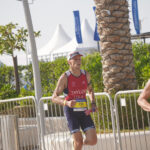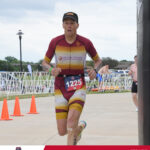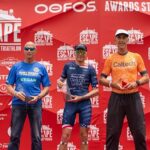In my last I Practice What I Preach article, I described how I will be focusing on my weaknesses—swimming and cycling—during the prep period leading into the 2024 triathlon season. I also did a deep dive into how I was going to improve my swim technique and speed by leveraging two pieces of swimming  technology that have become an essential part of my triathlon-performance “toolkit”: FORM smart goggles and EOSwimBETTER metrics. Both of these devices have provided me with a clear understanding of what will enable me to swim faster and opened up a world of improvement in my swimming with real-time feedback and stroke analytics. And what I wrote about in that article and what I’m going to write about in this article is intended to help me achieve my goal of being more competitive with the top guys in my age group out of the water and off the bike.
technology that have become an essential part of my triathlon-performance “toolkit”: FORM smart goggles and EOSwimBETTER metrics. Both of these devices have provided me with a clear understanding of what will enable me to swim faster and opened up a world of improvement in my swimming with real-time feedback and stroke analytics. And what I wrote about in that article and what I’m going to write about in this article is intended to help me achieve my goal of being more competitive with the top guys in my age group out of the water and off the bike.
Today’s article will focus on my efforts to improve my cycling as I prepare for 2024.
Let me start with my reality as a cyclist (and an athlete): I’m not a power guy. I only weigh 135 lbs. (61kg), so I simply lack the size and muscle to generate significant wattage on my bike. When I first got tested by an exercise physiologist in early 2021, my FTP was 197w. In early 2022, just six months after being hit by a car on a training ride and unable to ride for 2 ½ months, my FTP dropped down to 176w. Then, after a very productive 2023 off-season, my FTP rose dramatically, to 230w.
car on a training ride and unable to ride for 2 ½ months, my FTP dropped down to 176w. Then, after a very productive 2023 off-season, my FTP rose dramatically, to 230w.
My coach, Dr. Greg Rhodes, told me that the best measure of my power is relative to body weight, commonly measured in watts per kilogram. After my first two FTP  tests in 2021 and 2022, with a high of 3.1 watts/kg, Greg told me at the time that if I wanted to be competitive in the cycling leg of my triathlons, I needed to get my watts/kg over 3.5, which, based on my early 2023 testing, I exceeded at 3.7. And I did see the gap close as I chased the fast guys on the bike in my national and international races. But the gap was still there, and it was preventing me from finishing higher in my “A” races in 2023.
tests in 2021 and 2022, with a high of 3.1 watts/kg, Greg told me at the time that if I wanted to be competitive in the cycling leg of my triathlons, I needed to get my watts/kg over 3.5, which, based on my early 2023 testing, I exceeded at 3.7. And I did see the gap close as I chased the fast guys on the bike in my national and international races. But the gap was still there, and it was preventing me from finishing higher in my “A” races in 2023.
Given that I’m a competitive guy and I want to see how fast I can go and how good I can be in relation to my age-group peers, Greg has devised a very different off-season cycling program than last year with the goal of increasing my power and my endurance so I can be competitive at every distance in which I’m competing from Super-Sprint to Olympic distance in 2024.
Long Rides, Lots of Climbing
I haven’t enjoyed long rides (meaning more than 40 miles) since my Ironman days several decades ago. Also, given my chosen race distances over the last few years (Olympic and shorter), I didn’t think I needed to ride much farther than 30 miles to prepare for my longest cycling distances in races.
Also, as a cyclist without much power, I’ve never enjoyed climbing because I was just slow. Plus, it was just plain painful. Also, most triathlons that I race aren’t hilly, so what’s the point of climbing?
plain painful. Also, most triathlons that I race aren’t hilly, so what’s the point of climbing?
But both my ride distance and terrain have changed dramatically this winter. As I noted in my previous article, I’m now doing Sunday rides on my road bike on the most challenging roads in Marin County (north of San Francisco). I’m doing rides up to 60 miles and  have been climbing 3000’-5000’ of elevation. And, amazingly, I’m loving both the distance and climbing! I’m already seeing benefits. Physically, I still have good legs at the end of my longer rides and I’m putting out more power and just feeling stronger on the long and frequent climbs. Psychologically, I’m now super motivated to go long and hard, and my efforts so far have led to a real jump in my confidence where I’m feeling like I can actually climb and am looking forward to hilly bike courses.
have been climbing 3000’-5000’ of elevation. And, amazingly, I’m loving both the distance and climbing! I’m already seeing benefits. Physically, I still have good legs at the end of my longer rides and I’m putting out more power and just feeling stronger on the long and frequent climbs. Psychologically, I’m now super motivated to go long and hard, and my efforts so far have led to a real jump in my confidence where I’m feeling like I can actually climb and am looking forward to hilly bike courses.
Strength Training
I recommitted to serious strength training last winter and I credit my big increase in FTP to my added time in the weight room. After being way into weightlifting in my early 20s, I’ve returned with gusto to squats, deadlifts, and bench press (among other exercises) with heavy weights. Though it’s amazing how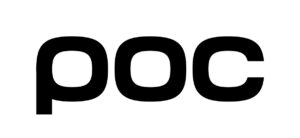 much weaker I am all these decades later, I have seen significant gains in how much I’m lifting compared to when I started lifting heavily in late 2022.
much weaker I am all these decades later, I have seen significant gains in how much I’m lifting compared to when I started lifting heavily in late 2022.
When I’ve mentioned this return to heavy weights to some of my peers, their typical reaction is: “Be careful, you don’t want to hurt yourself!” And, according to some research I read a while back, the natural tendency is to lift lighter and less frequently as we age for fear of injury. Yet, my coach, Greg (who has a Ph.D. in exercise physiology), says that the research suggests just the opposite; as we age, we need to lift consistently and with heavier weights. Since my re-engaging with heavy lifting, I have been injury free, feeling stronger, and looking more lean and ripped than I ever have.
This added strength, which I plan to build further on during the current prep period, will hopefully take my cycling power and endurance to a new high. I know for sure that it has already boosted my confidence and belief that I can hang with the big boys on the bike this upcoming race season.
Cadence Training
In the past, I could only hit my target wattage during HIIT workouts on my indoor trainer by pushing the big chainring in front or a small gear in back at a low cadence. The problem with high power/low cadence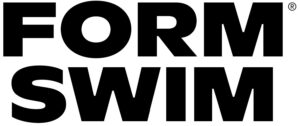 cycling is that it caused me to fatigue quickly and run out of gas sooner.
cycling is that it caused me to fatigue quickly and run out of gas sooner.
A new focus for the coming season is to be able to push more watts more efficiently, that is, at a higher cadence. To that end, Greg has me doing cadence training once a week. These workouts involve hitting certain wattage targets at different spin rates. The goal is to train my body to push a certain amount of power while maintaining a higher and more efficient cadence, thereby going faster and farther.
Harder and Longer Intervals
I’ve been pretty good at pushing my power for short intervals, say, 30-60 seconds. And I was able to stay within spitting range of the fast guys on the bike at the Super-sprint and Sprint distances. But the biggest  challenge I had last year was holding a high wattage for long periods of time in both training and races. This difficulty was evident in my Olympic-distance races where, after hanging with the top cyclists for the first half of the bike course, they would steadily pull away from me on the second half of the ride.
challenge I had last year was holding a high wattage for long periods of time in both training and races. This difficulty was evident in my Olympic-distance races where, after hanging with the top cyclists for the first half of the bike course, they would steadily pull away from me on the second half of the ride.
To build my endurance power, Greg has me doing weekly indoor bike workouts that involve increasingly longer intervals at increasingly higher power targets. Not surprisingly, these workouts are very painful! Not only have I already seen gains in my endurance-power fitness, but the fact that I’ve been able to get through these workouts and hit my wattage goals has provided a real boost to my confidence.
Entering T2 in 2024
My goal for 2024 is to improve my swimming and cycling over the next few months so I can minimize (or erase) the gap that I’ve been faced with as I run out of T2. Of course, I’m not neglecting my running because I want that event to continue to be my strength. To that end, I’m spending one running workout a week at the track doing intervals ranging from 200 meters (high-end speed) to 600 meters (sustained speed). With less ground to make up, I will better position myself to use my running speed to challenge for the top step of the podium at national and world championship events. And, at a more fundamental level, to see how fast I can go start to finish in every race during my 2024 triathlon season.
because I want that event to continue to be my strength. To that end, I’m spending one running workout a week at the track doing intervals ranging from 200 meters (high-end speed) to 600 meters (sustained speed). With less ground to make up, I will better position myself to use my running speed to challenge for the top step of the podium at national and world championship events. And, at a more fundamental level, to see how fast I can go start to finish in every race during my 2024 triathlon season.

